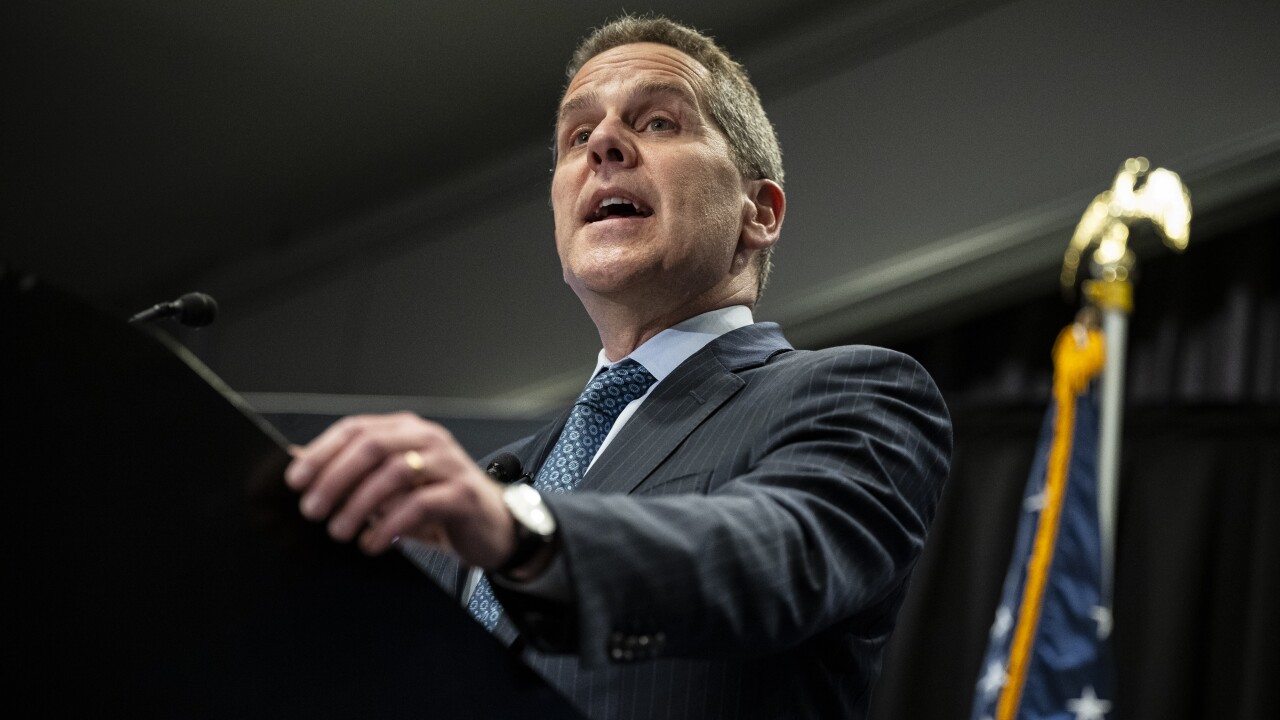-
The Federal Reserve Board is seeking public comment on a proposal that would exempt banks with less than $1 billion in total assets from certain debt limits, a move favored by community banks.
January 30 -
WASHINGTON Congress passed legislation late Thursday that will expand community bank access to the debt markets in order to finance acquisitions.
December 12 -
WASHINGTON Policymakers should consider changing rules that limit the amount of debt that holding companies can carry in order to exempt more community banks from the restrictions, a senior Federal Reserve Board official said Friday.
November 7 -
S corporation banks are concerned that the capital conservative buffer under Basel III and a potential prohibition from paying tax-distribution dividends to shareholder could cause more of them to slow growth plans or merge.
April 25

Community banks consider it a key milestone to hit $1 billion in assets, but a recent policy change could prompt more bankers to carefully manage how they cross that threshold.
The Federal Reserve Board
While closely tied to M&A, the change could also encourage more banks to form holding companies or raise senior debt to replace bank-level subordinated debt. Banks could also use funds from a debt issue to buy back stock and boost performance, industry experts said. Bank holding companies with less than $1 billion in assets, for the most part, will also be exempt from Basel III capital rules.
As a result, more banks could consider lingering below $1 billion in assets while they line up financing and consider their options in terms of capital structure and acquisitions.
Banks that "are right at the cusp" of the new cutoff might be open to "managing below" the threshold, said Lowell Harrison, a lawyer at Fenimore, Kay, Harrison & Ford. He noted that there were instances of banks managing how they approached the previous cutoff.
The policy creates a "fundamental change" to earnings for banks that cross the expanded threshold, said Tim Coffey, an analyst at FIG Partners. That potential change could be more noteworthy than crossing over other key asset thresholds, he added.
The rule change was mandated by a
Fed Gov. Daniel Tarullo, who pushed for the change,
Executives contacted by American Banker declined to comment or said they are still trying to assess the benefits that could come from the change, leaving most discussion on the topic to analysts and other industry observers.
The change could create a financial incentive for bank holding companies to stay below $1 billion in assets at least in the near term because debt financing is typically cheaper than using equity, said Thomas Killian, a principal at Sandler O'Neill who recently wrote a report on the issue.
"Responsible banks that take advantage of the policy statement want to try to help lower their average cost of capital," Killian said. "By lowering their cost of capital, they can enhance returns to common shareholders."
The change was an acknowledgement by policymakers that "smaller, non-complex institutions don't present the same risk to the system" as bigger banks, said Jeffery Smith, a lawyer at Vorys, Sater, Seymour & Pease.
For instance, qualifying banks must meet
The updated policy reflects "that the average size of community banks is increasing, and is changing what is truly considered a small bank in today's market," Harrison said.
The policy change made 460 bank holding companies eligible for the new exemption, Killian
Given the potential capital flexibility, more small bank holding companies could elect to stay under or shrink below $1 billion in assets, Coffey said. Marginally profitable banks with more than $1 billion in assets could shed low-yielding assets to dip below the cutoff, Coffey's firm wrote in a recent report.
Such scenarios could make small banks more appealing to investors. "From a [return on equity] perspective, they're going to screen better," Coffey said.
Harrison disagreed that banks would look to slim down.
"Banks are generally growing in size through consolidation or organically," Harrison said. "I don't see banks managing it the other way."
While bankers were reluctant to discuss the issue, representatives for key trade groups downplayed the potential of members purposely restraining growth to reap benefits from the policy change.
Hovering below $1 billion in assets could be a "temporary" possibility for banks that "don't see a real need to grow extensively," said Chris Cole, senior regulatory counsel at the Independent Community Bankers of America.
The more important takeaway is that the policy gives banks new tools to raise capital. "We've always looked at it as an access to capital issue," Cole said.
It is possible that banks could manage when they cross the expanded threshold, Wayne Abernathy, executive vice president of financial institutions policy at the American Bankers Association, said. Still, he said the Fed policy will be more important for "specific mergers" that require more debt financing.





